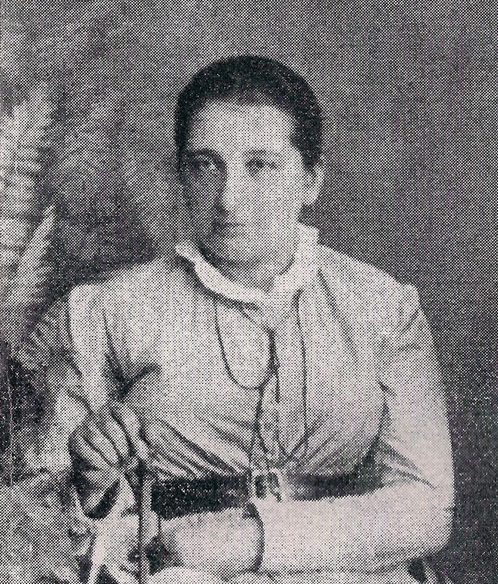|
Nina Berova-Orahovac
Nymfodora "Nina" Berova-Orahovac (; 27 November 1859 – 23 May 1945) was a Bessarabian-Bulgarian woman who was a co-founder of the School Health Institute and the student summer camp in Pancharevo. She was raised in the Bulgarian communities of and Bolhrad in what is now Ukraine. After graduating as a physician from the Medical Academy of Saint Petersburg in Russia, she became the second Bessarabian physician to work in Bulgaria. She completed her residency at the Aleksandrovska Hospital in Sofia, serving as a medic during the Serbo-Bulgarian War. Later she worked in the hospitals in Vidin, Lovech and Koprivshtitsa, before returning to Sofia. Along with Velichko Georgiev, she founded the Bulgarian School Health Institute, to train professionals in hygiene and health to work as school doctors. In 1905, she was one of the founders of the women's association which established summer camps to educate and promote good health for students. She worked as a school nurse until 1915, ... [...More Info...] [...Related Items...] OR: [Wikipedia] [Google] [Baidu] |
Bessarabia Governorate
The Bessarabia Governorate was a province (''guberniya'') of the Russian Empire, with its administrative centre in Kishinev (Chișinău). It consisted of an area of and a population of 1,935,412 inhabitants. The Bessarabia Governorate bordered the Podolia Governorate to the north, the Kherson Governorate to the east, the Black Sea to the south, Kingdom of Romania, Romania to the west, and Austria-Hungary, Austria to the northwest. It roughly corresponds to what is now most of Moldova and some parts of Chernivtsi Oblast, Chernivtsi and Odesa Oblast, Odesa Oblasts of Ukraine. It included the eastern part of the Moldavia, Principality of Moldavia along with the neighboring Ottoman Empire, Ottoman-ruled territories annexed by Russia by the Treaty of Bucharest (1812), Treaty of Bucharest following the Russo-Turkish War (1806–1812). The Governorate was disbanded in 1917, with the establishment of Sfatul Țării, a national assembly which proclaimed the Moldavian Democratic Republic i ... [...More Info...] [...Related Items...] OR: [Wikipedia] [Google] [Baidu] |
Anastasia Golovina
Anastasia Golovina (), (1850–1933), was the first Bulgarian female doctor and psychiatrist.Nazarska, Georgeta: "Bulgarian women medical doctors in the social modernization of the Bulgarian nation state (1878–1944)". In: ''Historical Social Research'' 33 (2008), 2, pp. 232–246. URN: http://nbn-resolving.de/urn:nbn:de:0168ssoar-191329 Biography She was born in Chișinău, now part of the Republic of Moldova, on October 17, 1850. The sixteenth child in her family, her parents were immigrants from Kalofer, Bulgaria. Her grandfather, Kalcho Minkov, had moved from Kalofer to Bessarabia in the early 19th century. He volunteered during the Russo-Turkish War of 1828-1829 and served as mayor of Chișinău for nine years. The early death of her father, coupled with the societal restrictions of the time that limited women's access to higher education, created significant challenges for Anastasia. Nevertheless, she passed the exams to become a private tutor, earned a diploma from a Fr ... [...More Info...] [...Related Items...] OR: [Wikipedia] [Google] [Baidu] |
19th-century Bulgarian Physicians
The 19th century began on 1 January 1801 (represented by the Roman numerals MDCCCI), and ended on 31 December 1900 (MCM). It was the 9th century of the 2nd millennium. It was characterized by vast social upheaval. Slavery was abolished in much of Europe and the Americas. The First Industrial Revolution, though it began in the late 18th century, expanded beyond its British homeland for the first time during the 19th century, particularly remaking the economies and societies of the Low Countries, France, the Rhineland, Northern Italy, and the Northeastern United States. A few decades later, the Second Industrial Revolution led to ever more massive urbanization and much higher levels of productivity, profit, and prosperity, a pattern that continued into the 20th century. The Catholic Church, in response to the growing influence and power of modernism, secularism and materialism, formed the First Vatican Council in the late 19th century to deal with such problems and confirm cer ... [...More Info...] [...Related Items...] OR: [Wikipedia] [Google] [Baidu] |

